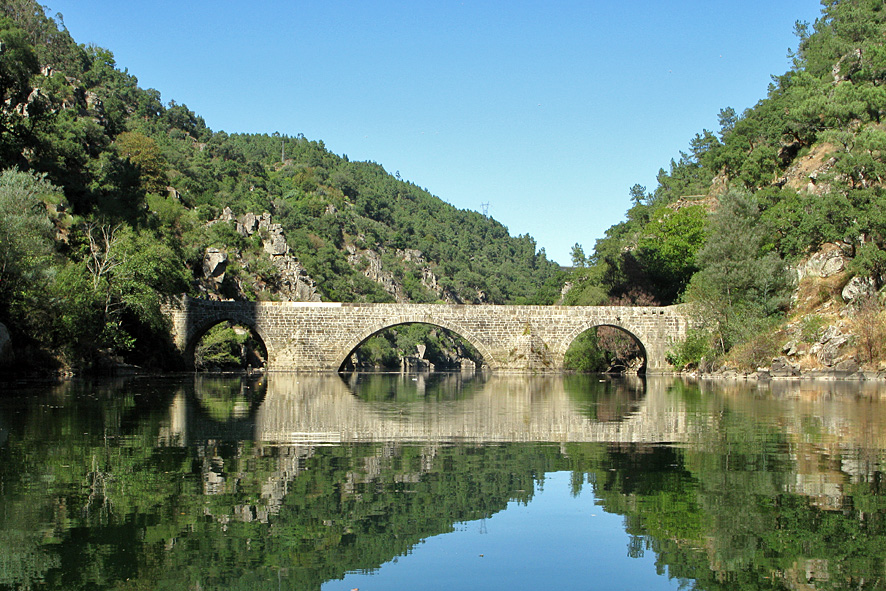The archaeological remains found in the county, date the settlement of the region from the second millennium BC, when the first human communities settled at the confluence of Ribeira de Pêra with Zêzere, on the spurs of Penedo do Granada and Nossa Senhora dos Milagres, known as "Old Castle". Traces of Roman presence have survived to our days: the Calvário/Devesa Archaeological Station, in the urban area of Pedrógão Grande; the industrial unit for the manufacture of construction materials, in Cabeço da Cotovia and the Cabril Roman Bridge, currently submerged by the waters of the Bouçã Dam.
Currently, Pedrógão Grande continues to develop and grow around its historical centre. Along with the preservation of alleys and alleyways characteristic of the medieval period, new streets and avenues are being developed, capable of responding to the housing and commercial market in constant growth. Social and leisure areas have been redefined, such as the Largo da Devesa and the Municipal Camping Park of Vale de Góis, on the edge of the Cabril reservoir.

The municipality of Pedrogão Grande is one of the regions of the country where natural beauty, customs and popular traditions, combined with the purity of the air and water of the interior are maintained. The landscapes are dynamic, with distinct characteristics and with tourist potentialities. In Pedrógão you can enjoy moments on the river beaches, practise water sports, go camping, go hiking in the middle of nature, or get to know a vast architectural and archaeological heritage.
It is a vast region of granites and schists, embedded in the basins of the rivers Zêzere and Unhais and the streams of Pêra and Mega, increased by the reservoirs of two large dams, Cabril and Bouçã. The climate is mild, influenced by the two big reservoirs, and invites to walks and baths, but also to fishing of largemouth bass, barbel and boga. Pedógão Grande is integrated in the Zone of Northern Pine Forest, the biggest forest area in Europe, where pine trees, eucalyptus, acacias and olive trees predominate and take on great importance in the local economy.
According to the 2021 Census, the municipality of Pedrógão Grande has a population of 3.390 inhabitants, distributed across its three parishes, served with the necessary infrastructures for their health, well being but also for leisure, such as fluvial beaches, footpaths, climbing walls and picnic parks.
It borders the municipalities of Castanheira de Pêra, Góis, Sertã and Figueiró dos Vinhos. A regional framework which allows the municipality to benefit from a diversified network of accessibility, allowing easy connections with other municipalities and neighbouring urban centres.
In the gastronomy, the highlights are the river fish, the roast kid, the roast chicken, the bucho and the maranhos, the wild boar stew, the cracklings and the sarrabulho rice, as well as the fish soup. As to sweets, we recommend rice pudding, bread pudding, tigeladas (fried cakes) and honey cake. The regional production includes honey, goat cheese, chestnuts, olive oil, walnuts, wine and medronho (a kind of firewater), with which you can accompany or complement your meal.
Source: Pedrógão Grande City Hall